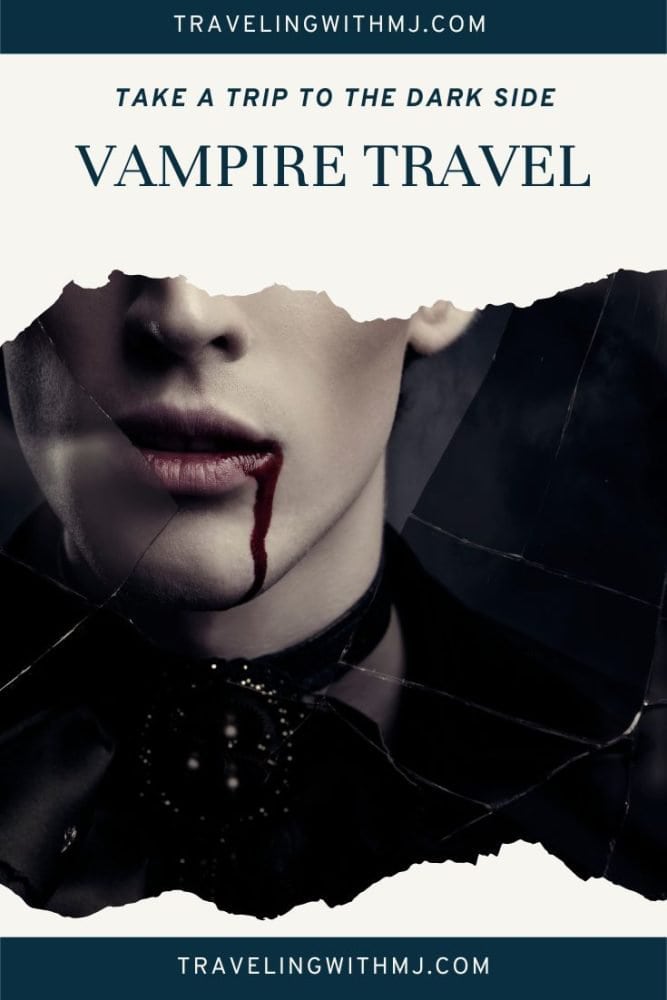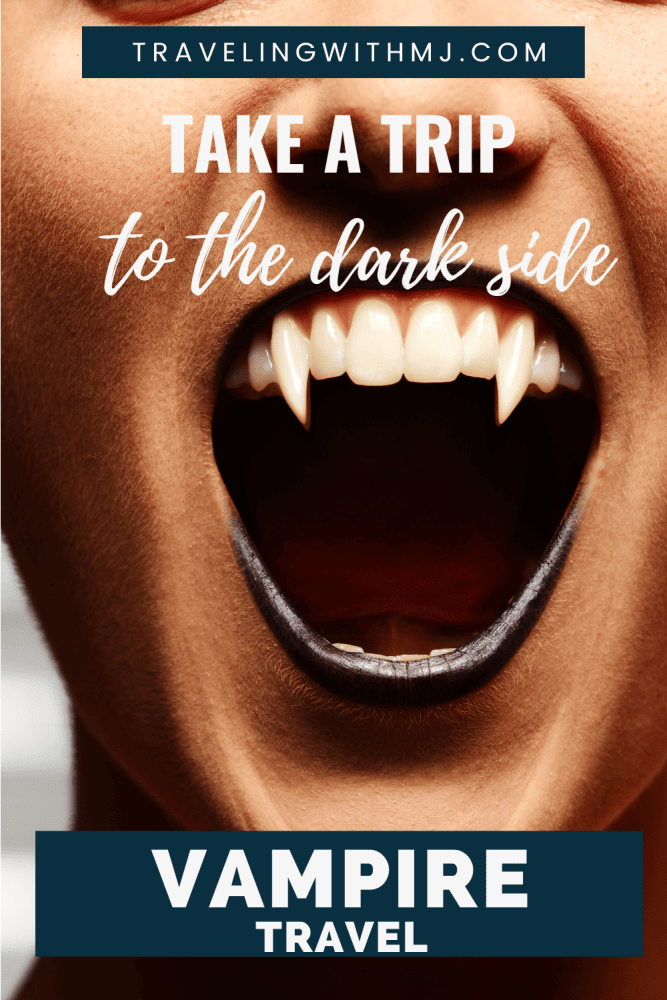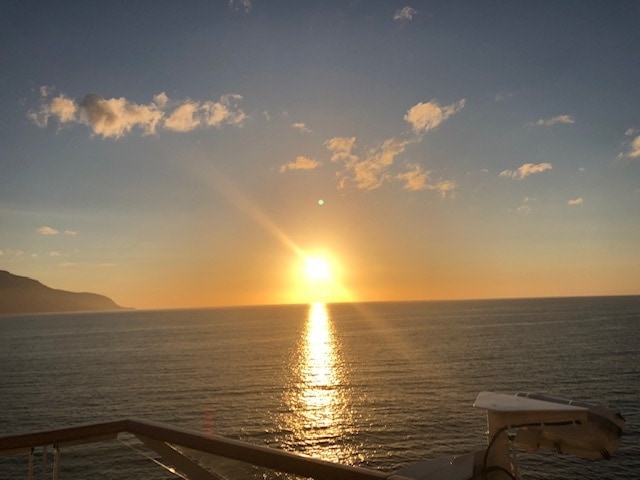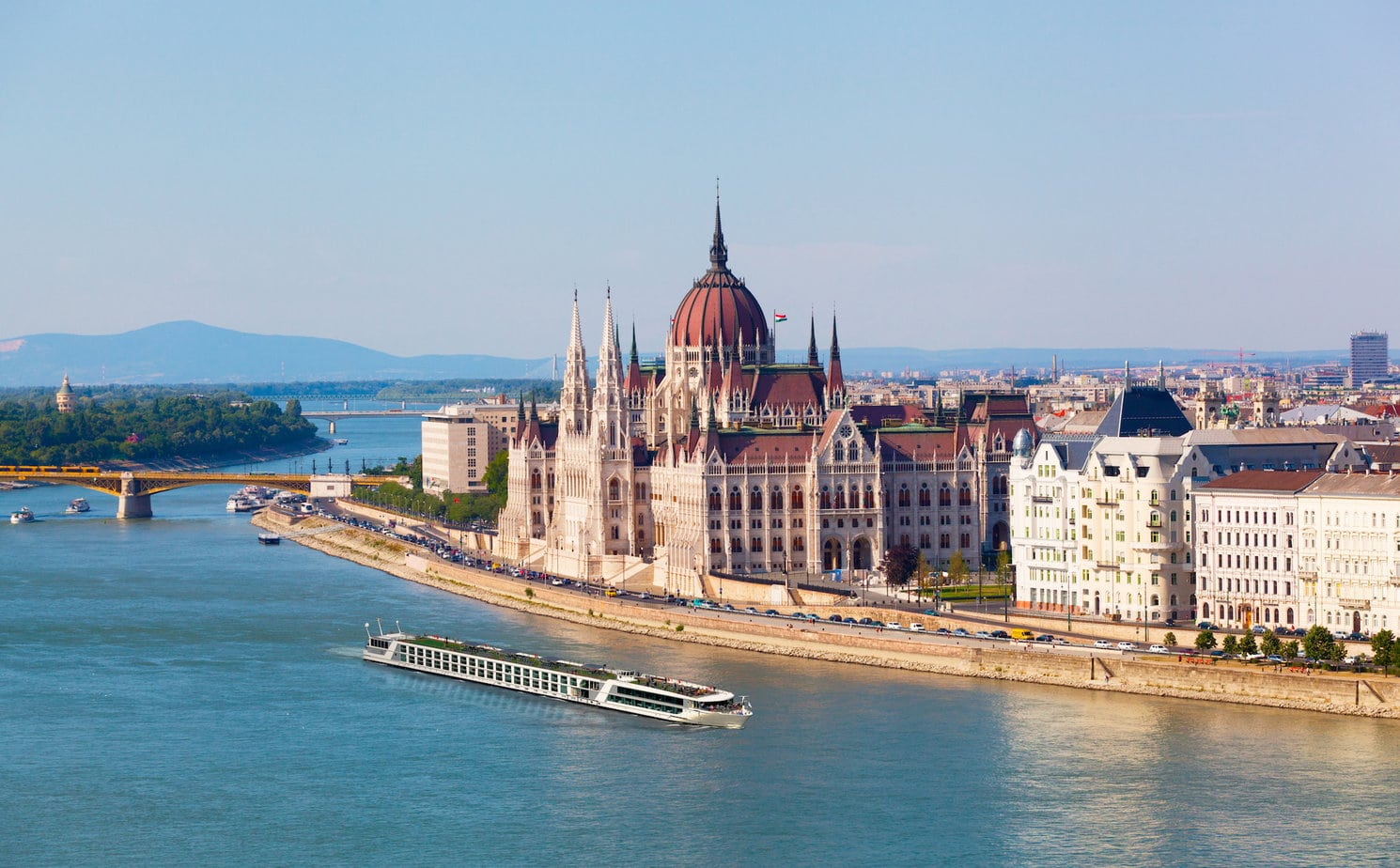People travel to destinations around the world for many different reasons – some are eager to learn about local history, culture, and religion, while others simply want to explore the natural landscapes and enjoy the scenery. A less common type of tourism though, but still one with ardent fans, is vampire travel.
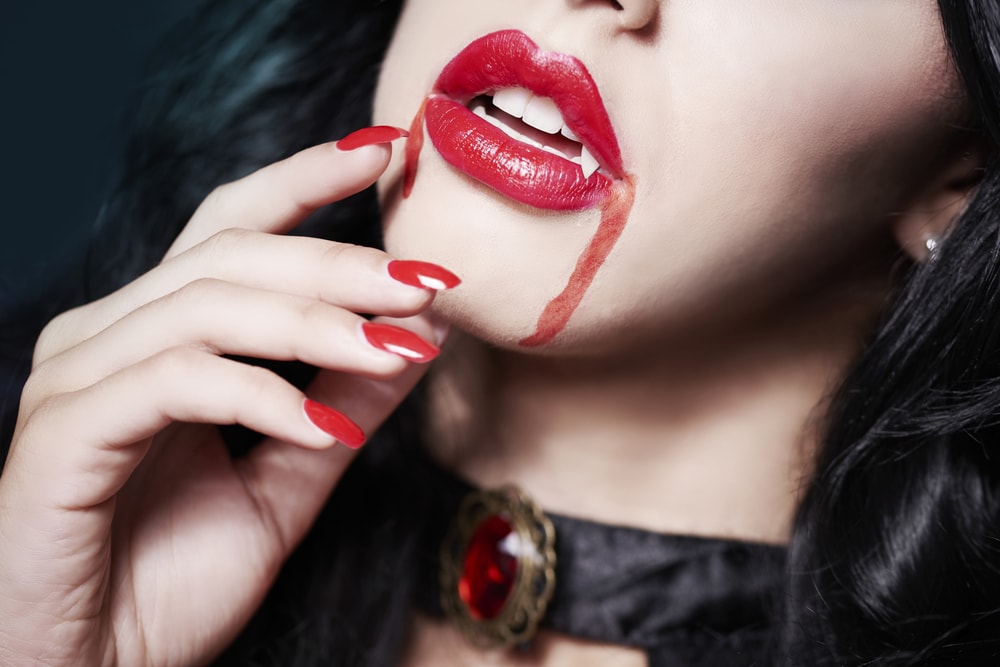
Let’s talk about what vampire travel is, the lines between fact and fiction, and explore how vampire travel relates to culture – that is, how much of its origins come from culture and history, as well as the issues of respecting local cultures and avoiding cultural appropriation. Then, we’ll get into the top destinations around the world for vampire tourism, followed by some specific (more isolated) attractions where you can explore this aspect of dark tourism.
What is Vampire Tourism?
Vampire tourism is all about attracting tourists to specific destinations for the sake of exploring, learning about, or experiencing anything to do with vampires. This can range from vampire themed events to locations that are specifically connected to vampire-related folklore.
In many ways, vampire tourism is a branch of dark tourism, in that vampires are intrinsically related to death. When it comes to folklore, the topic of vampires is fairly morbid. The degree to which vampire tourism counts as dark tourism really comes down to where we believe the topic falls in terms of fact or fiction, and that, for the most part, comes down to culture and opinion.
Vampire Tourism and Cultural Considerations
Different religions and cultures view notions of death and the afterlife differently, so it’s no wonder that the idea of vampires falls under fact for some and fiction (often explained as superstition) for others. This difference in belief is evident in the way in which vampire tourism exists and is portrayed in different places and by different people.
For instance, an attraction related to vampires may be explained as a true historical site, a place where real evidence was found of the existence of vampires from a different time. Often, these beliefs are at least partially related to historical fact, and they tend to tie into local culture and tradition.
In other cases, we may find instances of vampire tourism that pertain more to popular culture references of vampires – that is, locations related to vampire movies or simply events adopting the idea of vampires as a theme. Here, the idea of vampire tourism is far more casual and quirky.
Either way, it’s important to be mindful of these differences in culture. Both instances of vampire tourism are fair and valid, but a comprehensive understanding of the underlying beliefs and cultures will help tourists avoid blatant cultural disrespect. Of course, there’s also always the risk of cultural appropriation when people begin to profit from something related to traditional beliefs – exploring traditional folklore is one thing, but making fun of or exploiting it is another thing completely.
So, with these issues in mind, let’s have a look at some of the top destinations and attractions for vampire tourism around the world.
Top Destinations and Attractions for Vampire Tourism Around the World
I’ve split my list into two parts – the first for general places to experience vampire tourism, and the second for specific, isolated attractions that embrace vampire tourism.
Top Destinations for Vampire Tourism Around the World
Here are seven places around the world that have become popular travel destinations for vampire tourists.
Transylvania, Romania
For many, Transylvania – a region in Romania – is the first place that comes to mind when we hear the term “vampire tourism”, and it all comes down to Dracula.
Dracula was a book written by Bram Stoker, published in 1879, and Count Dracula, as the main character, is considered by many as the archetypal vampire of popular culture. The book was also made in to a movie, Bram Stoker’s Dracula.
The book is set in Romania and according to the story, Dracula himself lived in a castle in Transylvania – thus, beginning the association of the region with vampires and dark tourism. There are two real-life castles upon which the story is believed to have been based – Bran Castle and Poenari Castle. The former is the most popular attraction, and tourists are able to purchase vampire and Dracula themed goodies as well as tour the castle. The latter, however, is slightly more similar to the description of the character’s castle in the book, but it’s more difficult to get to and is, thus, less visited.
But Dracula wasn’t just the product of Bram Stoker’s imagination. The character of Count Dracula was based on a very real historical figure, Vlad Dracula, also known as Vlad the Impaler. During the 15th century, Vlad Dracula reigned in Wallachia and earned a reputation as a harsh, brutal ruler, and later, these rumors morphed from him being a metaphorically bloody-thirsty monster, into a literal bloody-thirsty monster. Hence, the tale of Dracula was based on legends already enshrined in Romanian folklore.
Most of the top destinations related to vampire tourism in Transylvania have to do with the real-life historical figure, Vlad Dracula, while a few have gained popularity due to Stoker’s book. Here are a few other popular attractions in Transylvania:
- Borgo Pass: The pass at which Dracula makes his fateful journey from Transylvania to England.
- Corvin Castle: Where Vlad the Impaler was imprisoned.
- Sighisoara: The birthplace of Vlad the Impaler.
- Snagov Monastry: Where Vlad the Imapaler was supposedly buried.
- Royal Court in Targoviste: 14th century fortress strongly connected to Vlad the Impaler.
- Cluj Napoca: Where Jonathan Harker spends the night in Dracula.
Tourists can visit all of these locations, and at some of them, organized tours are available if you’d like a more comprehensive experience.
New Orleans, Louisiana, USA
New Orleans is probably the place that is second most commonly associated with vampires – this is based on folklore as well as the fact literary, movie, and television fame.
The Originals and True Blood, famous vampire-related television shows, were set in and around New Orleans. Anne Rice’s prolific career included a series of novels called The Vampire Chronicles. The first book in the series, Interview with the Vampire, was also turned into a movie. Rice was born in New Orleans and lived in the city’s Garden District. Her former home is a highlight on a walking tour of the district.
For centuries, tales of vampires and other spooky happenings have been fully embraced in New Orleans, with the creepy side of things being a fairly standard part of life in the city.
Belief in the supernatural is common, and even those who aren’t total believers still aren’t above taking precautions, just in case. That’s why many people selling homes today will specify whether or not it’s haunted (apparently, it’s a selling point for some and a dealbreaker for others). Some homes have upside-down keyholes, perfect for those that believe vampires and the dead (or really any undesirable, spooky entity) could unlock doors. If the locks are upside down, they won’t be able to get in.
When it comes to vampires specifically, legends in Louisiana tell tales of many vampires who lived in New Orleans, but probably the most popular stories were those of Jacques Saint-Germaine (Comte de Saint-Germaine) and the Casket Girls of New Orleans.
The main vampire-related attractions to visit in New Orleans include:
- The Gallier House on Royal Street
- LaLaurie Mansion
- Boutique Du Vampyre
- The French Quarter: Wander around or a do a guided tour.
Forks, Washington State, USA
Forks, Washington, became famous for its connection to vampires and the supernatural after the rise in popularity of Stefanie Myers’ Twilight series. The books and subsequent films feature Edward Cullen and Bella Swan and are set in the small town of Forks (population around 3,400) on the Olympic Peninsula.
Twilight fans still visit the town to see its many famous Twilight sites, even though most of the movies were actually filmed in Portland, Oregon. You can either hop on a guided tour or visit the attractions on your own..
Here are the main vampire and Twilight-related attractions in Forks:
- The annual Forever Twilight in Forks Festival
- The Quileute Oceanside Resort
- The treaty line sign
- Jacob Black’s House
- The Cullen House
- La Push Beach
- Hoh Rain Forest in Olympic National Park
The town of Forks really stepped into its newfound fame, and embraced it as an economic opportunity. You’ll see traces of and odes to the book and film franchise all over town.
Prague, Czech Republic
Prague is well known for its ghost stories and other spooky legends, so there’s no shortage of haunted things to do while you’re there. Czech folklore is full of tales of ghosts and vampires. A specific kind of vampire called pijavica (translating to “leech”) is often referred to in Prague and the surrounding countryside, with legends dating back centuries.
Probably the most commonly told story is that of the Bloody Knee vampire. Legend has it that he resides at Olšany Cemetery. Located a little outside the main touristy areas, legend holds that when people visit the cemetery, the vampire trips them up, hoping that they’ll fall and injure themselves (specifically their knees) giving him an opportunity to attack.
Pontianak, Indonesia
Indonesian vampire history and folklore is so prevalent that an entire city was named after the region’s most famous, and most feared, type of vampire – Pontianak.
The legend holds that the Pontianak is a vampire form of mythical creature that takes the form of a pregnant woman who cannot give birth to her child. She’s viewed as a vengeful female spirit and those who claim to have seen her say she is long-haired, pale-skinned and dressed in white with hauntingly red eyes. Supposedly, she is a bloodthirsty, carnivorous beast who preys on men and other unsuspecting victims.
This legend that requires some cultural sensitivity. The tale of Pontianak has become such an integral part of local culture, especially in the city and surrounding region, that it still sparks true fear in the locals. Consequently, no touristy attractions, as such, have been established around the legend.
However, if you’re visiting the area, you can look out for some interesting additions to the legend that locals may be willing to share with you. Here are a few:
- You’ll know that Pontianak is near if you hear an infant crying accompanied by feminine laughter.
- Pontianak resides in and around banana trees during the day.
- Dogs howling at night may indicate that Pontianak is near.
- Her presence may be recognized by a floral scent followed by a foul stench.
- She’s attracted to her prey by the smell of clean laundry – this is why many people don’t leave washing out overnight.
When it comes to popular culture, you’ll also find that Pontianak has been the subject of a plenty of of grim horror films.
Whitby, North Yorkshire, England
Whitby, North Yorkshire, has always had a connection to vampires by means of Bram Stoker’s Dracula. Stoker spent much time staying in Whitby while writing and researching his book, and Whitby Abbey makes an appearance in the book.
Today, Whitby’s vampiric presence is more about honoring Stoker’s memory and the legend that Dracula has become, rather than on folklore and tales about mythical creatures. In 2022, on the 125th anniversary of the publication of Dracula, Whitby set a new record for the largest number of people dressed as vampires with 1,369 vampire fans dressed in costumes.
.
For those who are avid readers and big fans of Dracula, a visit to Whitby lets you to find some fun bits and pieces of the town that were included in the story. Find the 199 steps of Whitby Abbey, track the family name of Swales (Dracula’s first victim), and see the often referenced red roofs of the town.
Pisco, Peru
Pisco, a small fishing town in Peru, holds the dark legend of a vampire woman who haunts the town. As the tale goes, Sarah Ellen Roberts was one of the many brides of Dracula. Here’s where fact and fiction really go awry. In 1913, officials in her home of Lancashire deemed her a vampire and she was put into a coffin lined with lead. Before the coffin was slammed shut, she swore that she would claim vengeance upon her accusers. Local graveyards refused to bury her due to superstitions surrounding her threats. Eventually, her husband went to claim her body and take her home with him. She was eventually buried in Pisco.
This legend arose once again when an earthquake struck in Pisco in 1993. Roberts’ grave was one of few that remained mostly intact. From that point on, many locals became fearful of her grave, refusing to pass by it.
Today, the legend is alive and well in the town of Pisco, and you can visit the grave of Sarah Ellen Roberts.
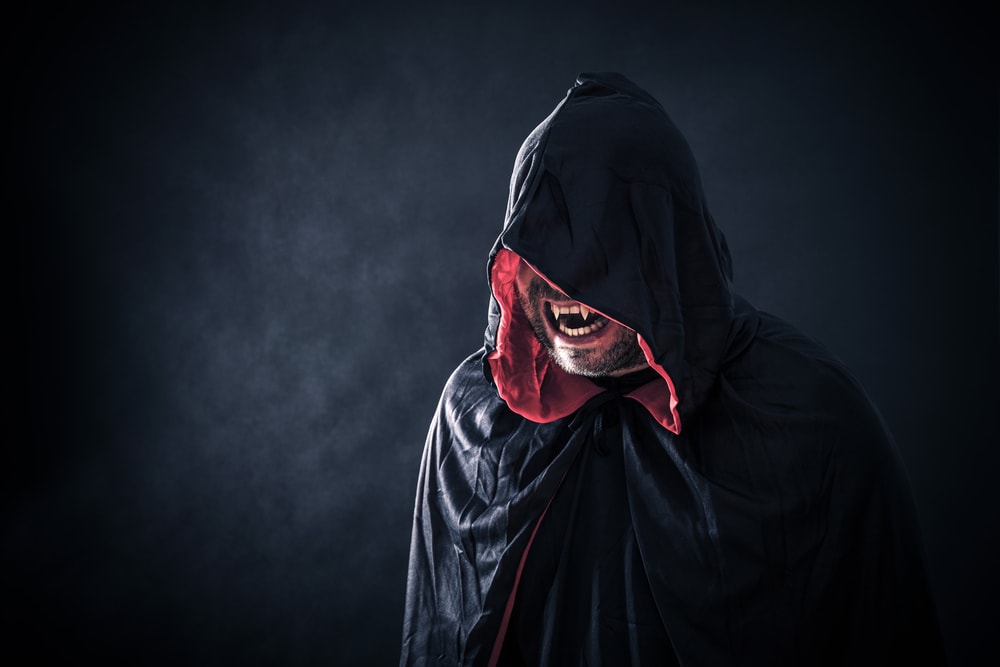
Other Popular Attractions for Vampire Travel
Here are some other popular attractions around the world that may not have entire towns and cities involved in spooky stories and legends but are worth the visit if you’re into vampire legend.
Musée des Vampires: Paris, France
Tucked away down a dark little alley in the Porte des Lilas area of Paris, far from the throngs of locals going about daily life and the hordes of tourist visiting the city’s main attractions, is the Musée des Vampires. The owner, Jacques Sirgent, is an English teacher by day and a passionate self-proclaimed vampirologist by night.
Sirgent’s collection is made up of a variety vampire-related goods and gadgets, some historical and erring more on the side of fanciful.. A few of his most interesting items include a vampire protection kit that dates back to the 19th century, and a cross bow from a similar time that was supposedly used to fend off these terrifying monsters.
When you visit Musée des Vampires, you can wander around the house and see Sirgent’s curious collection, before heading into the garden which, true to theme, is designed as a graveyard.
No official website.
Cachtice Castle: Slovakia
Located in the Karpaty Mountains, above the village of Cachtice in western Slovakia, lies the ruins of Cachtice Castle, the former home of the ill-famed bloody countess, Elizabeth Batory.
Batory lived during the late 15th and early 16th centuries, and earned a reputation as a gruesome killer of young women. Legend has it that she killed about 600 young women during her reign of terror and bathed in their blood in an attempt to remain youthful. She supposedly killed the unsuspecting girls in an iron maiden with knives in its lid, that pierced their chests once it was closed – the blood was collected below.
The ruins of the castle are open to visitors today, and you can get there from either the village of Cachtice or Višňové. Both involve a 45-minute walk; follow the yellow hiking markers from Cachtice and the yellow or green markers from Visnove. The closest you can drive to the castle is the meadow below it. You’ll need to walk from there.
Official website here.
Vampire Café: Ginza, Tokyo, Japan
One of many themed restaurants in Tokyo, Vampire Café offers lovers of all things dark and creepy and immersive experience, The staff are all dressed as vampires, and every item on their menu – drinks included – follows the dark and gloomy theme.
Enjoy dishes such as “Dark Sorcery Using Flames Harboring the Devil” or “Tragic Execution of a Traitor Burning to Death.” Pretty grim, but on brand, I suppose!
Just a few minutes from Ginza Station, Vampire Café is easy to find and get to, but make sure to make a reservation otherwise you may have to wait (although if you do, you can wander around and check out their interesting décor). Also, the bonus of having a reservation is that you can request the creepiest table in the house!
Official website here.
Dracula Tour of London: London, England
In London, you have a variety of choice when it comes to Dracula-related attractions. There are two main reasons for this – first, Bram Stoker, Dracula’s author, lived in London with his wife for many years; second, the character of Count Dracula himself lived in London for a time as well.
You can visit both of their homes (imagined in the case of the latter, of course) and other interesting sites. If you’d like to do it all in one go, you can do an organized Dracula Tour – including things like the top attractions in the city and a good old vampire banquet, or, you can visit the attractions in your own time. A tour guide will help bring the history of vampire to life (pun intended).
Here are some of the must-see attractions in London:
- Bram Stoker’s Various Homes: The Stokers lived in three different homes in London: 17 St. Leonard’s Terrace, Chelsea; 27 Cheyne Walk, Chelsea; 26 St. George’s Square, Pimlico.
- Lyceum Theatre: Bram Stoker worked there for Sir Henry Irving for nearly 30 years.
- Highgate Cemetery: The supposed site of Lucy Westenra’s grave. The cemetery is said to be a hotbed of paranormal activity.
- The Old British Library: Stoker did much of his research here.
- Golder’s Green Crematorium: The site of Bram Stoker’s ashes.
Endless Night Vampire Ball: New York City, Berlin, Paris, Amsterdam, Tampa, New Orleans
The event of the season for vampire lovers all over the world, the Endless Night Vampire Ball is a formal gala filled with glitz, glamor, and all things gory and horrifying. The ball is a sophisticated production, including top-quality sound, lighting, and performances. Variations of the event are hosted in New York City, Berlin, Paris, Amsterdam, Tampa, and New Orleans.
Official website here. This is an annual event.
Mercy Brown’s Grave: Exeter, Rhode Island, USA
In the late 19th century, New England was overwhelmed by vampire hysteria, and there were several instances of bodies being exhumed for rituals to be performed on them to banish unwelcome spirits and prevent the manifestation of vampires. One of the first bodies to be exhumed was that of Mercy Brown in Exeter, Rhode Island in 1892.
Her family had fallen victim to a tuberculosis outbreak in the area, and after her mother, her sister, and she all passed away mysteriously, her brother began to show symptoms. Suspicions grew that there may, in fact, have been a vampire among the three dead Brown family members. The bodies were exhumed and checked. Mercy’s body was still fairly well preserved at the time, so they cut out her heart and forced the sick brother, Edwin Brown, to drink some of her blood. Of course, it didn’t help, and he still passed away, but the tuberculosis outbreak seemed to, coincidentally, slow down after that.
If you’re into vampire tourism and you happen to be in the area, you can still visit Mercy Brown’s grave in Exeter, Rhode Island, at the Chestnut Hill Cemetery.
Books About Vampires
We can’t always indulge our interests with travel, so if you’re looking to enjoy a tale from some master storytellers, here’s a great to-read vampire list.
- Dracula by Bram Stoker – Probably the best known book set in Romania, Vlad the Impaler’s influence extended beyond Transylvania. A classic vampire read.
- Interview with the Vampire by Anne Rice – The first in the series from this prolific New Orleans author.
- Salem’s Lot by Stephen King – An early book from this best selling horror writer about a town of vampires.
- Let the Right One In by John Ajvide Lindqvist – Another take on the vampire myth.
- Vampire Academy by Richelle Mead – A young adult vampire series full of magical twists and turns
For Pinterest
Save to your favorite Pinterest boards and plane a vampire tourism trip.
